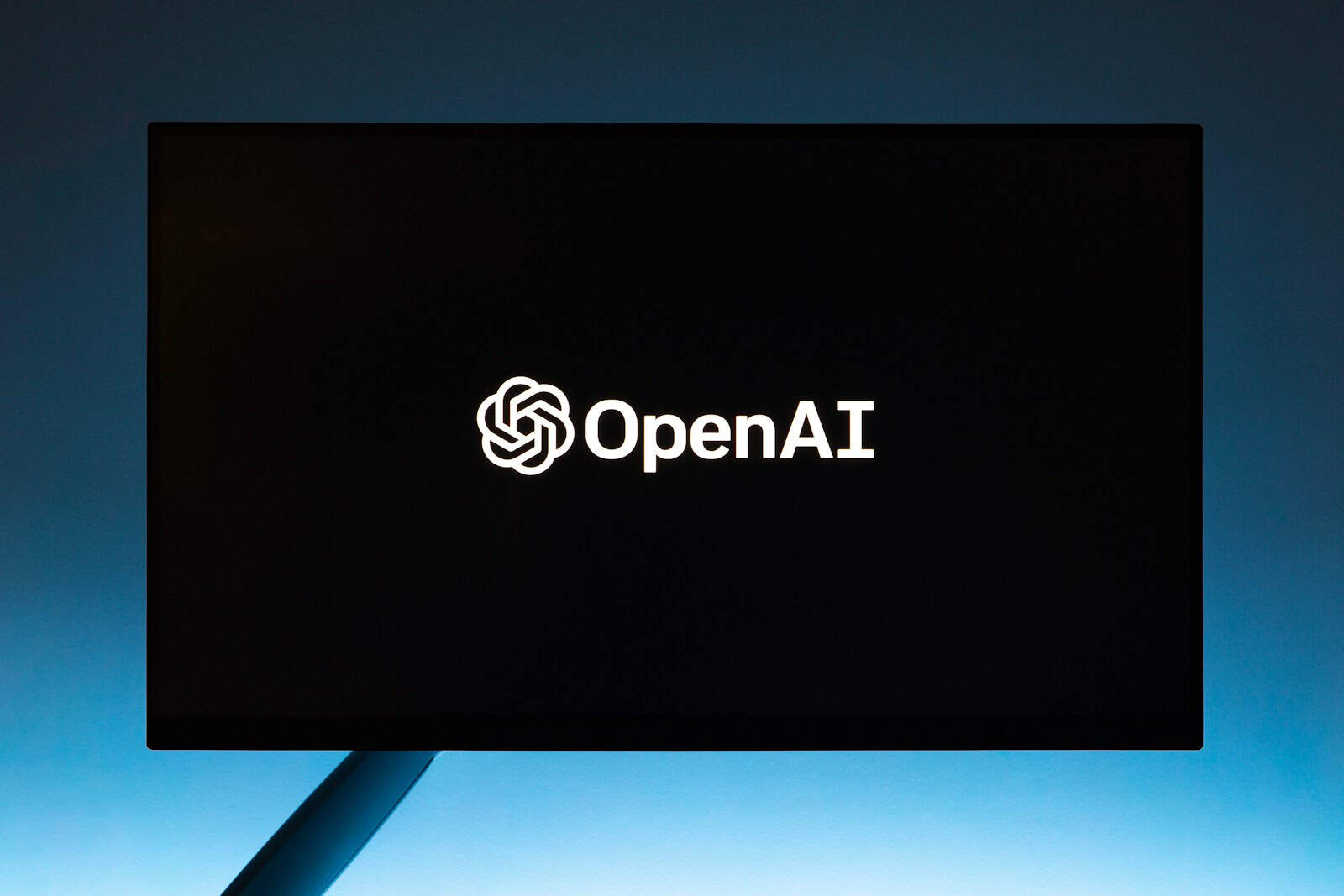OpenAI CEO Sam Altman plans to revolutionize personal computing with a groundbreaking AI device – and we have no idea what it is. The company is developing a dedicated AI device in collaboration with former Apple design chief Jony Ive, aimed at creating an alternative to traditional smartphones that will primarily use voice commands for interaction. If successful you would imagine the current market dominated by Apple and Samsung in the US and Xiaomi, OPPO, and Vivo globally could be completely transformed.
We don’t (yet) know what the device category will be – earbuds, glasses, headset, etc. – but whatever it ends up being, this new device represents a significant shift in OpenAI’s strategy. This moves them beyond software development into hardware creation. According to reports he device will not follow conventional smartphone design principles, instead offering a fresh approach to daily technology interaction.
Sam Altman’s vision extends beyond creating just another gadget. OpenAI aims to reshape how people interact with AI technology through natural conversation, marking a potential turning point in consumer electronics.
The Future of Mobile: OpenAI’s Vision
Beyond the Smartphone
Sam Altman, OpenAI’s CEO, has dropped some exciting news: they’re building something that could change how we use tech. Forget just another phone; Altman’s talking about a fresh take on personal devices, something built from the ground up for AI. This isn’t just an upgrade; it’s a whole new category.
Why a New Device?
Altman thinks our current phones aren’t great for working with AI. He envisions a device where AI is front and center, not just another app. This means rethinking everything, from how we interact with the device to the hardware itself.
Voice First
One big hint? Altman’s talked a lot about voice. He sees it as the natural way to talk to AI. Think less tapping and more talking. This new device might be more like having a conversation with your tech.
Hardware and Design
OpenAI isn’t just dreaming; they’re doing. They’ve filed trademarks for all sorts of hardware, from robots to smartwatches. They’re even making their own AI chips. This suggests they want complete control over the device, from software to hardware. And they’re teaming up with design legend Jony Ive, the person behind many iconic Apple products. This means the device will likely be sleek and well-designed.
What Could It Be?
We don’t know all the details yet. But the hints suggest something very different. Imagine a device that learns your habits, anticipates your needs, and helps you in ways your current phone can’t. It could be a personal AI assistant, a powerful tool for creativity, or something entirely new.
The Competition
OpenAI’s not the only one thinking about AI hardware. Big tech companies are also working on AI-powered devices and VR/AR. This could be the start of a whole new tech race, with OpenAI right in the middle.
Timeline and Availability
When can you get your hands on this new device? That’s still a mystery. But the fact that OpenAI is talking about it means it’s probably closer than we think.
The Big Picture
This isn’t just about a new gadget. It’s about changing how we live with technology. OpenAI’s vision could reshape how we work, communicate, and interact with the world around us.
| Feature | Details |
|---|---|
| Focus | AI-centric device, potentially replacing smartphones |
| Interaction | Emphasis on voice control |
| Hardware | OpenAI developing its own AI chips and other hardware |
| Design | Collaboration with Jony Ive |
| Potential | Revolutionizing user interaction with AI |
The buzz around OpenAI’s upcoming device is electric. It’s not just another gadget launch; it’s a potential paradigm shift in how we interact with technology. The whispers of a smartphone alternative, designed from the ground up for AI, have ignited imaginations and sparked speculation about a future where AI is seamlessly woven into our daily lives.
Key Takeaways
- OpenAI and Jony Ive are creating a voice-controlled AI device to replace smartphones
- The device will feature a unique design distinct from traditional mobile devices
- This marks OpenAI’s first major venture into consumer hardware development
Exploring the Horizon of AI Technology
OpenAI advances AI technology at a rapid pace, with CEO Sam Altman announcing major breakthroughs in artificial general intelligence development and superintelligence research.
Conceptualizing AI’s Future
Sam Altman claims OpenAI has discovered the path to building artificial general intelligence (AGI). This declaration marks a significant shift in AI development timelines.
The company projects potential superintelligence emergence within “a few thousand days.” This timeline suggests a faster progression than many experts previously estimated.
OpenAI’s vision extends beyond current AI capabilities:
- AGI Development: Creating systems with human-level reasoning
- Safety Protocols: Implementing ethical guidelines for advanced AI
- Integration Planning: Preparing for AI’s role in daily technologies
Engaging Partnerships and Industry Influence
OpenAI strengthens its position through strategic collaborations. Microsoft remains a key partner, providing crucial computing resources and technical support.
The company explores hardware development with former Apple designer Jony Ive. This partnership aims to create new AI-integrated devices.
Key industry impacts include:
- Tech Integration: Working with major companies to implement AI solutions
- Research Sharing: Collaborating with academic institutions
- Hardware Innovation: Developing specialized AI devices
OpenAI’s influence shapes tech industry standards and practices. Their work attracts attention from leading companies seeking to integrate advanced AI capabilities.
The company plans to revise its open-source strategy. This change could affect how AI technology spreads throughout the tech industry.
Ethical and Social Implications
The development of OpenAI’s dedicated AI device raises significant questions about trust, governance, and the broader impact on society. Sam Altman’s vision emphasizes responsible AI development while acknowledging potential risks.
Governance and Trust in AI
OpenAI’s move into hardware development requires strong governance frameworks. The company must establish clear protocols for data privacy, security measures, and user protection on their new device.
AI governance experts stress the importance of transparency in how the device processes and stores personal information. This includes giving users control over their data and implementing safeguards against misuse.
The transition from smartphones to AI devices needs regulatory oversight. OpenAI has pledged to work with governments and policy makers to create appropriate guidelines.
AI for Humanity: Benefits and Risks
The potential benefits of an AI-focused device include enhanced productivity, improved access to information, and personalized assistance. These advantages align with OpenAI’s mission to ensure AI benefits all of humanity.
Sam Altman acknowledges being “a little bit scared” about rapid AI advancement. This concern reflects the need for careful consideration of societal impacts.
Key risks include:
- Digital divide between those with and without access
- Job displacement in certain sectors
- Over-reliance on AI systems
- Privacy vulnerabilities
Scientists like Nick Bostrom warn about the importance of controlling superintelligent AI systems. This applies directly to personal AI devices that could become increasingly autonomous.
Frequently Asked Questions
OpenAI’s upcoming AI device project represents a significant technological advancement with potential implications for mobile computing and everyday smartphone usage.
What new AI device is OpenAI developing as a potential replacement for smartphones?
OpenAI is developing a dedicated AI device that aims to integrate advanced language models and artificial intelligence capabilities into a portable form factor. The device will focus on natural language processing and AI-driven interactions.
The company plans to create a device that moves beyond traditional touchscreen interfaces to offer more intuitive ways of interacting with technology.
What are the capabilities of the AI device being developed by OpenAI?
The device will feature advanced natural language processing capabilities powered by OpenAI’s latest language models. It will process voice commands, text inputs, and contextual information in real-time.
The AI device aims to perform tasks like scheduling, communication, and information retrieval more efficiently than current smartphones.
How does Sam Altman’s involvement influence the development of OpenAI’s AI device?
Sam Altman directly oversees the strategic direction of the AI device project as OpenAI’s CEO. His vision for AI integration shapes the device’s development priorities.
His experience with AI development and product strategy guides the team in creating a consumer-focused device.
What is the expected impact of OpenAI’s AI device on the smartphone industry?
The device could reshape how users interact with mobile technology by introducing new AI-driven interaction methods. Traditional smartphone manufacturers may need to adapt their products to compete with AI-first devices.
Market analysts predict this could trigger a shift toward AI-centric mobile computing.
What technologies is OpenAI incorporating into their dedicated AI device?
The device will incorporate OpenAI’s proprietary language models and neural networks. It will feature specialized AI processors optimized for running large language models.
Advanced speech recognition and natural language understanding systems will form core components of the device.
When can consumers expect the release of OpenAI’s dedicated AI device?
The exact release date remains unannounced. Development continues with internal testing phases underway.
The company maintains a careful approach to ensure the technology meets safety and reliability standards before public release.







